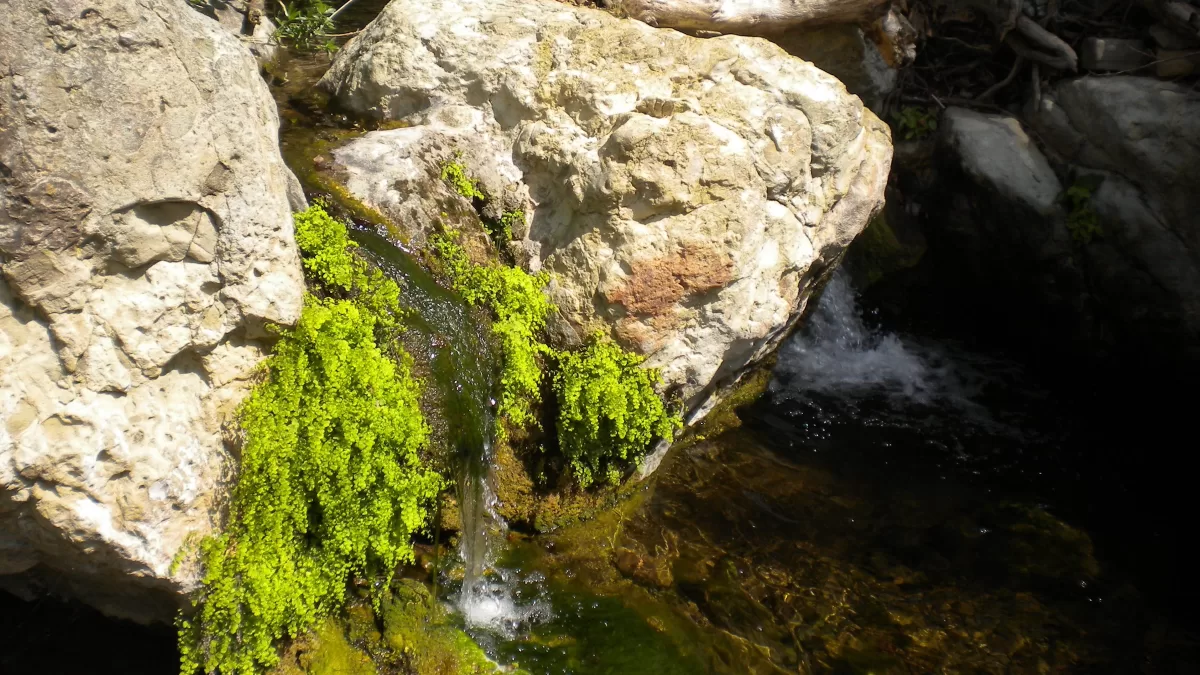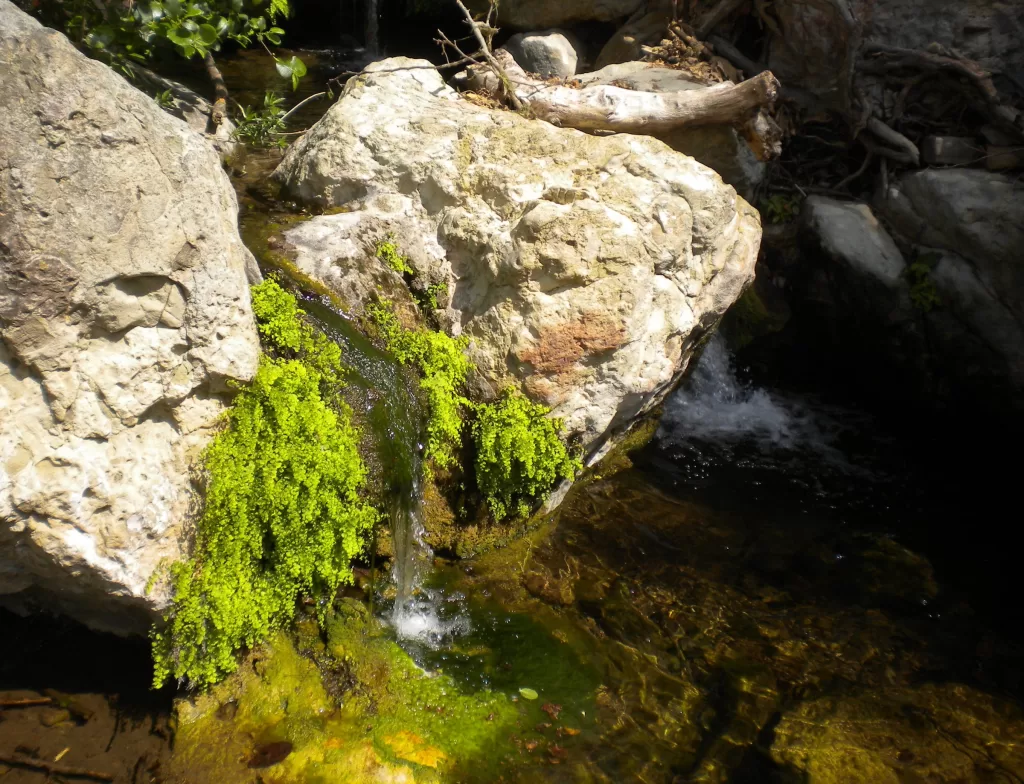
The native ferns of the Santa Monica Mountains are a miniature marvel, and this is the perfect winter to look for them. Newcomers to our mountains are sometimes surprised to find a small but vibrant jungle of primeval fronds thriving under the shade of the chaparral, but these ancient plants are incredibly durable. They’ve been here since the last ice age retreated, and they are as tough as they are delicate.
Ferns are seedless plants that developed long before flowering plants, but they are vascular—able to circulate water and nutrients—unlike the mosses and moss allies that often share their ecological niche.
Ferns need water to thrive, but all of the native species are able to survive long periods of punishing drought by going dormant during the dry season. Unlike ferns that grow in colder climates, they are drought-deciduous. Rather than going dormant during the cold season, they come back to life.
Ferns are among the first plants to recover after a wildfire, and research shows that ferns are also among the first plants to recover after much more extensive disasters, even extinction events: localized ones like the aftermath of the volcanic eruption of Mount St. Helens in 1980, and disasters with global impact like the mass extinction event 66 million years ago that was caused by a meteor strike in central America. That extinction event precipitated the end of the era of the dinosaurs and obliterated as many as four out of five plant species. Ferns—tough and resilient— were among the survivors.
Many species of fern have developed a mutually beneficial symbiotic relationship with fungi. The fern taps into the network of mycorrhizal fungi in the soil, which gives it access to nutrients, while the fungi takes advantage of the plant’s ability to photosynthesize.
Like fungi, ferns produce spores instead of seeds, although some species also spread through a network of rhizomes. In areas with abundant rainfall, ferns can grow to be giants—they are thought to have been the main food source for a variety of herbivorous dinosaurs, including some of the largest.
Ferns are unexpectedly abundant in the Santa Monica Mountains. There are 21 recorded native species. Some only occur in one or two locations—sometimes unlikely ones—others are widely distributed. Even when one expects to find them, they can come as a surprise: unfurling perfect green fronds in the shade alongside a favorite trail, sparking with diamond droplets of water beside a waterfall, or unexpectedly appearing out of seemingly inhospitable stone canyon walls after the rains have revitalized ancient seeps and springs.
This family of plants has weathered some of Earth’s most catastrophic climate changes and will likely still be here long after humans have gone the way of the dinosaurs. Ferns can appear delicate, almost ethereal, but they are some of the toughest plants on earth—true survivors.
Ferns to look for this spring
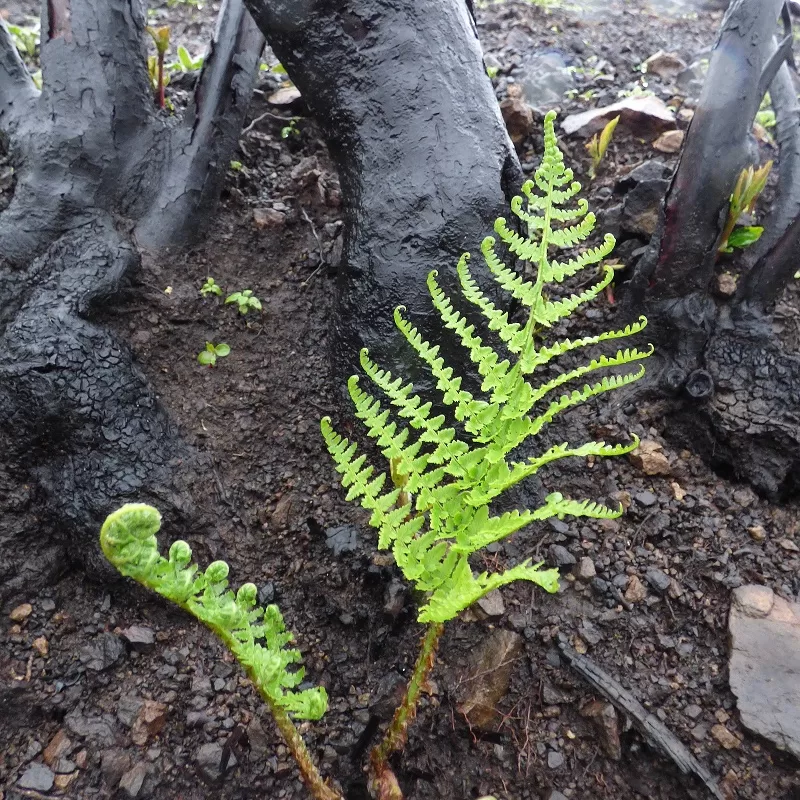
The coastal woodfern, Dryopteris arguta, can cover whole hillsides when conditions are right, and its network of roots can help stabilize the steep slopes that are its preferred habitat. This wood fern is native to the West coast. In the Santa Monica Mountains, it is limited to sheltered canyons, shaded by oak and ceanothus chaparral.
Maidenhair ferns are the delicate, moisture-loving fern found beside local waterfalls, or growing from the rock walls of shaded canyons, near springs or seeps. There are eight native species in the U.S., two of them are common in the Santa Monica Mountains. Southern maidenhair, Adiantum capillus-veneris, may look almost otherworldly, but this is a tough survivor that is even found in desert canyons and oases, in places like Palm Desert and the Mojave. This is the same species that is grown commercially as a house and garden plant, and its range includes much of the Southern U.S. It has fan-shaped pinnules (leaflettes) that resemble the herb cilantro.
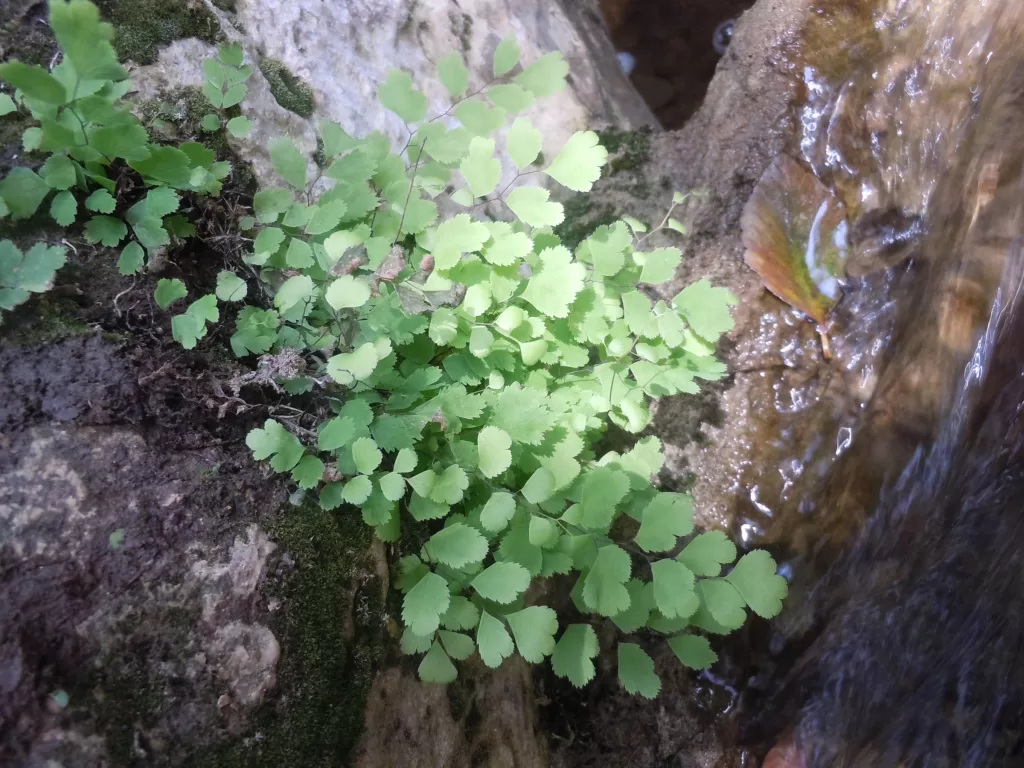
California maidenhair, Adiantum jordanii, appears extremely similar to its cousin, but it’s pinnules are more rectangular and not as lobed at the edges. This fern has a sinister side: it’s a host for Phytophthora ramorum, the fungus that causes sudden oak death. California maidenhair is native to only California and Oregon, but it can tolerate lower temperatures than its Southern cousin.
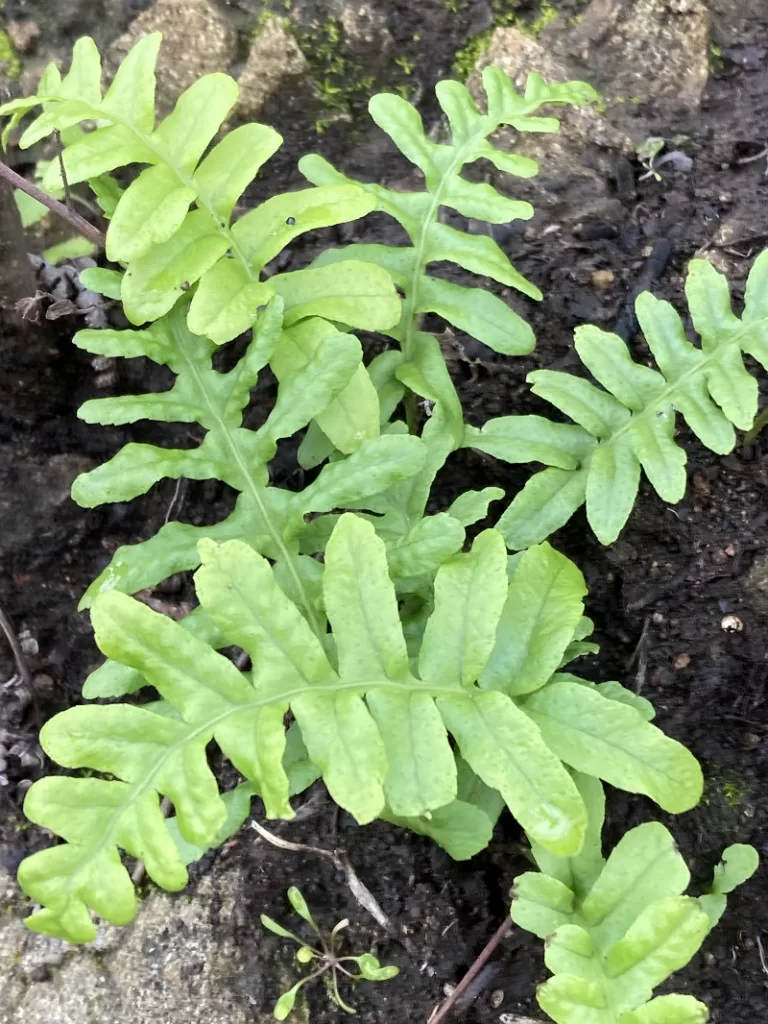
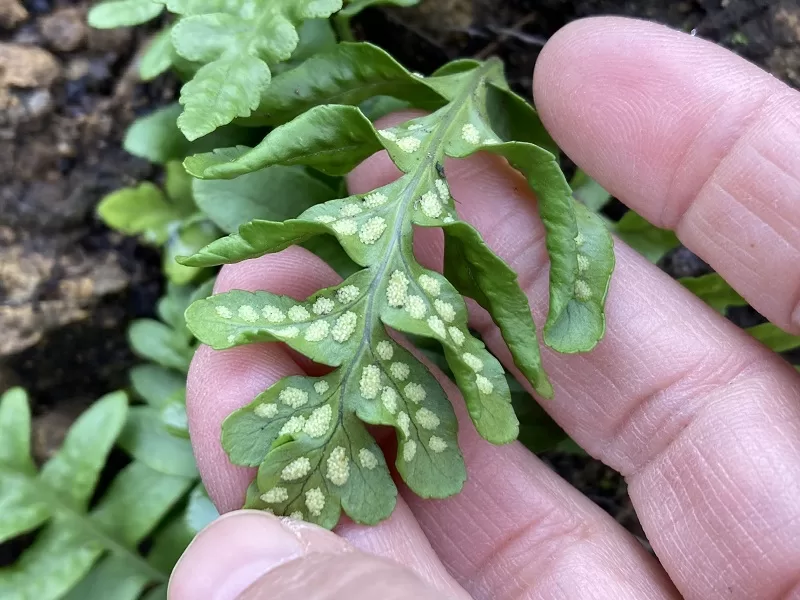
The California polypody, Polypodium californicum, grows throughout the coast ranges and in parts of western Sierras. In Northern California it grows in the open, sometimes covering whole hillsides. In the Santa Monica Mountains, it is limited to sheltered areas with moisture from seeps or springs. The polypody’s delicate, lime-green fronds are easy to spot right now, thanks to the abundant January rains. It is quick to dry out in the wild, but this fern is often available from native plant specialists, and will stay lush and green longer in the garden with a little extra water than it does in its native canyons.
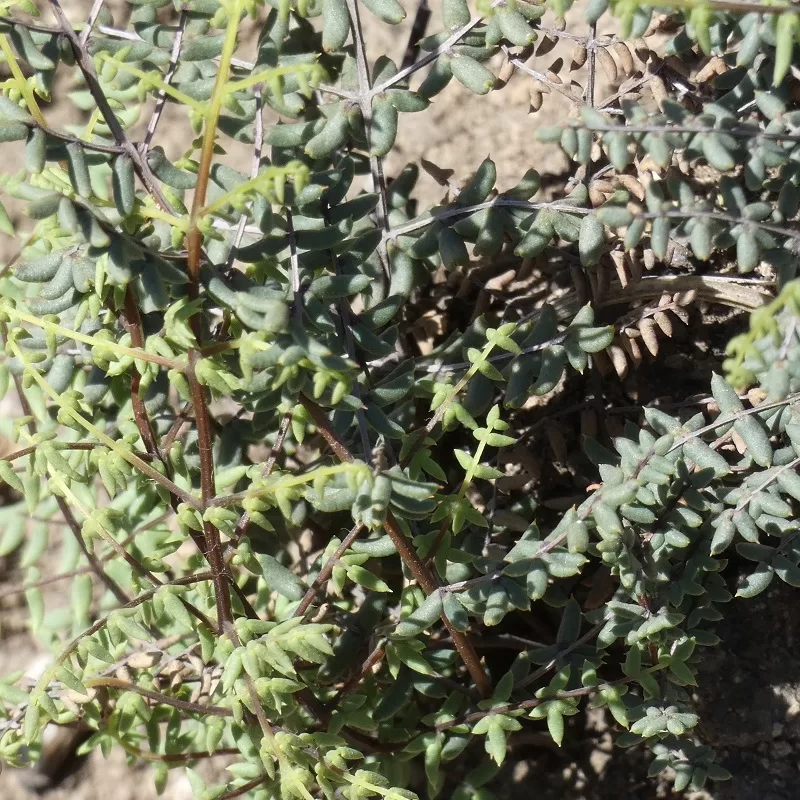
The Birdfoot Cliffbrake, Pellaea mucronata, is less particular about shade than some of our other native fern species. It thrives in rocky soil often in more exposed locations, although it seems to prefer the shadier north side of canyons to the sunny, southern exposures. It’s easy to mistake the leathery, shiny leaves of this species for something other than fern, but a close look reveals the sporangia—spore-bearing structures—on the edges of the mature leaflets. The birdfoot fern’s leaflets are pointed and arranged in groups of three that—with a little imagination—resemble bird feet that give it its name. This fern can be found throughout California and other parts of the West.
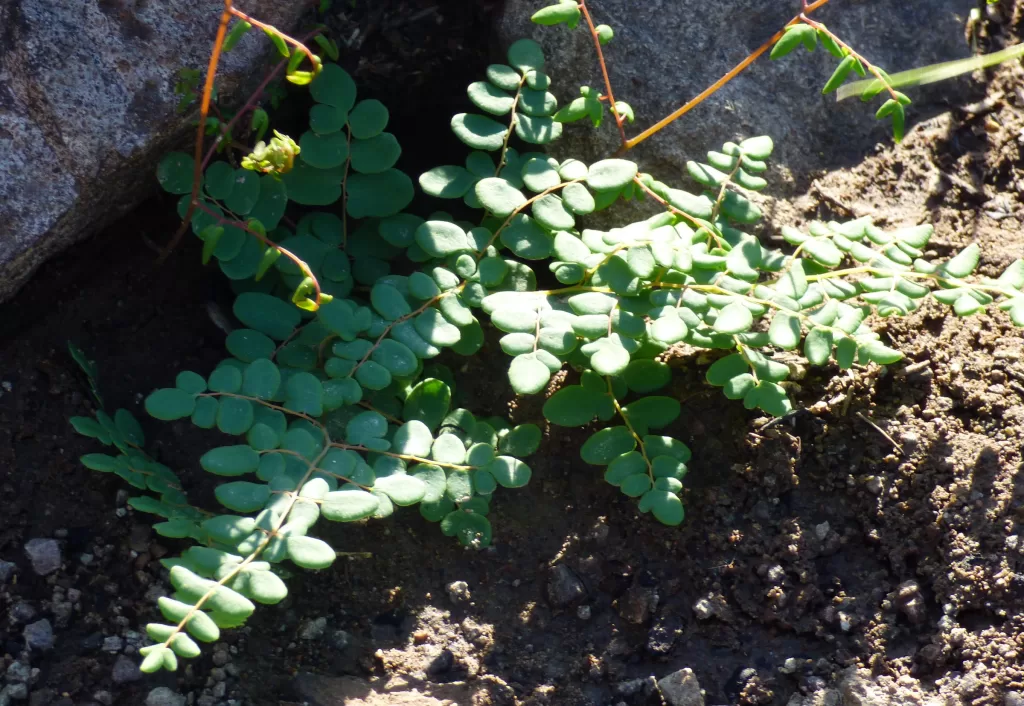
The coffee fern, Pellaea andromedifolia, is also a member of the cliffbrake family. It has oval leaflets that are roughly the shape of a coffee bean. Unlike its cousin the birdfoot cliffbrake, the coffee fern is only found in California.
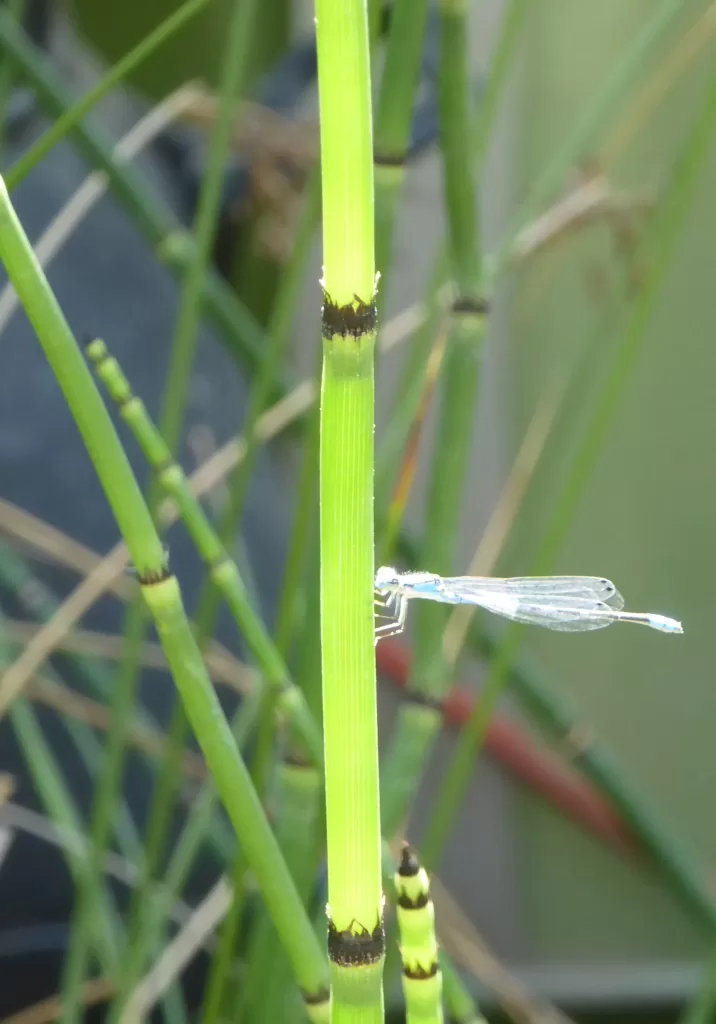
Smooth horsetail or scouring rush, Equisetum laevigatum, is a familiar garden plant that is native to much of North America, including the Santa Monica Mountains. This humble plant is a “fern ally” that belongs to the sole surviving genus of the Equisetaceae, the plant family that dominated the forests of the Paleozoic period—some species grew to be almost 100 feet tall. This is a true “living fossil,” that has changed little in 100 million years. Unlike most plants, horsetails use silica as a building block for cell walls. The presence of the silica gives horsetails their stiff, rough texture, and is the reason for this specie’s common name: “scouring rush.” It was used as a tough, non-scratching pot scrubber before the advent of plastic.





